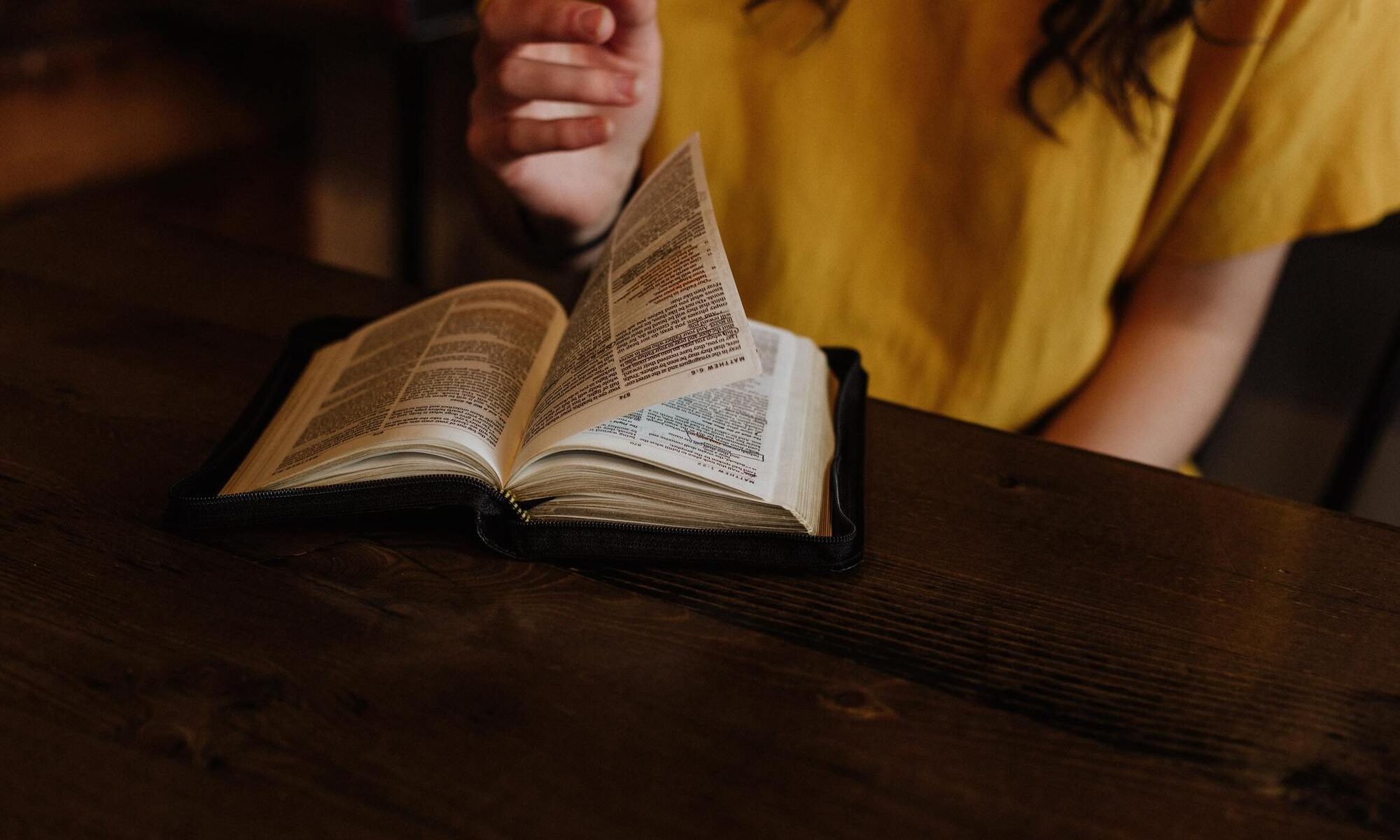Our family recently finished a two-year Bible reading plan…in only four years! It was quite the journey, and we encourage every family to undertake it.
Setting Out
Four years ago, we had just moved closer to the church, and our home was filled with boxes and renovation chaos. Our daughter wasn’t even talking yet (hard to imagine), and no one had ever heard of COVID (even harder). My first book, Hope for New Dads, had just been published, and I was eager to put its principles into practice. So, as the Men’s Bible Study met in our garage, I told them, “Our family’s going to read the Bible from cover-to-cover. I think we can do it in two years.”
Along the Trail
Our family read from the same Bible all four years, which we kept by the kitchen table so it wouldn’t be hard to find. We usually finished two or three chapters after dinner (not every night) with the kids interjecting questions such as, “Does God ever change his mind?” (Jeremiah 7:31) and “Why was the Egyptian so handsome?” (2 Samuel 23:21). Our children chattered throughout and rarely sat still, but contributed countless insights I’ve never heard from adults. Their favorites were the Old Testament historical books like Judges, Kings, and Chronicles. Yet even Leviticus and Numbers fascinated them as they heard these passages for the very first time. Sometimes, they also acted out the stories or built Lego replicas.
My wife and I are committed to reading aloud to our kids as one of the most effective (and simplest) forms of childhood education. So, of course, we had to include the Book of books in our repertoire. Reading the Bible to our kids, in any format, also helps us parents to stay in the Word.
A View from the Top
Now, four years later, our two middle-school children and the little ones in elementary school are learning to study the Bible for themselves. Through the pandemic, they observed expository preaching modeled in the worship service, and we conducted Sunday school on Zoom with a skeleton crew. At journey’s end, we’ve all grown a little bit older and a little bit wiser. So we’ll enjoy the view, take a moment to catch our breath, then start the adventure again.
Some Travel Tips
I greatly encourage you to set out on this journey with your own family. Here are ten travel tips that will guide you through.
- Keep your read-aloud Bible nearby and accessible. It’s hard enough to maintain this discipline without having to search the house each time. I also recommend a physical Bible instead of digital one as a visual memory for your children to cherish.
- Try to read at routine times to minimize complaints, perhaps after dinner while the kids are cleaning dishes. This keeps their ears and hands active because children don’t like sitting still. Their little minds are sponges that soak in God’s Word even as their bodies are doing something else.
- Pause for interruptions. Kids listen to the Bible with fresh ears because they are hearing these passages for the very first time. You might get questions or comments every few verses, so don’t rush through your reading like a task. Instead, pause whenever something of interest catches their attention. Try not to stop in the middle of a chapter, though, because it’s hard to remember where you left off.
- Read interpretatively with clear diction, Shakespearean drama, and bold enthusiasm. Your passion for the Scriptures will rub off on your children. If your kids are older, you might ask them to read occasionally, which will give them practice and confidence in reading the Scriptures for themselves.
- Choose an appropriate version like the ESV or NIV that doesn’t contain archaic language but also give preference to the translation your church uses in preaching. Pronounce people and place names phonetically as best you can or listen to an audio Bible if you need extra help. Your kids probably won’t know the difference and your goal is to give them the big picture without stumbling over details.
- Prepare in advance for any problem passages. Do some study on your own as you approach biblical difficulties, but also be willing to say, “I don’t know. Let’s learn this together.” Don’t get bogged down with questions. Instead, use their curiosity as motivation to just keep trekking (even if the journey takes you twice the time you planned).
- Prayerfully seek your children’s salvation. Remember that every child is born as an unbeliever who must respond to Christ with faith and repentance. Trust that reading God’s Word together will revive the soul and make wise the simple (Psalm 19:7).
- Use tools sensibly and sparingly. You might teach a simple outline or a song to frame the narrative or show a video to introduce the book’s big picture. Some kids like to reenact the story with Play-Doh or Legos. Others like to draw or dramatize. Tools should supplement the Scriptures, but not replace them. Also, whenever applicable, relate what you’re reading as a family with your church’s children’s ministry.
- End occasionally with a question for discussion. You might ask if they understand difficult vocabulary or theological terms. Just don’t get preachy or long-winded as this is not a sermon. Active engagement will train your kids to be doers of God’s Word instead of simply hearers (James 1:22).
- Finally, celebrate milestones! Go out to eat when you complete a section or plan a vacation after you finish the whole Bible. What you celebrate as a family reveals your priorities.
Got any other tips for reading the Bible aloud? Feel free to pass them along.

